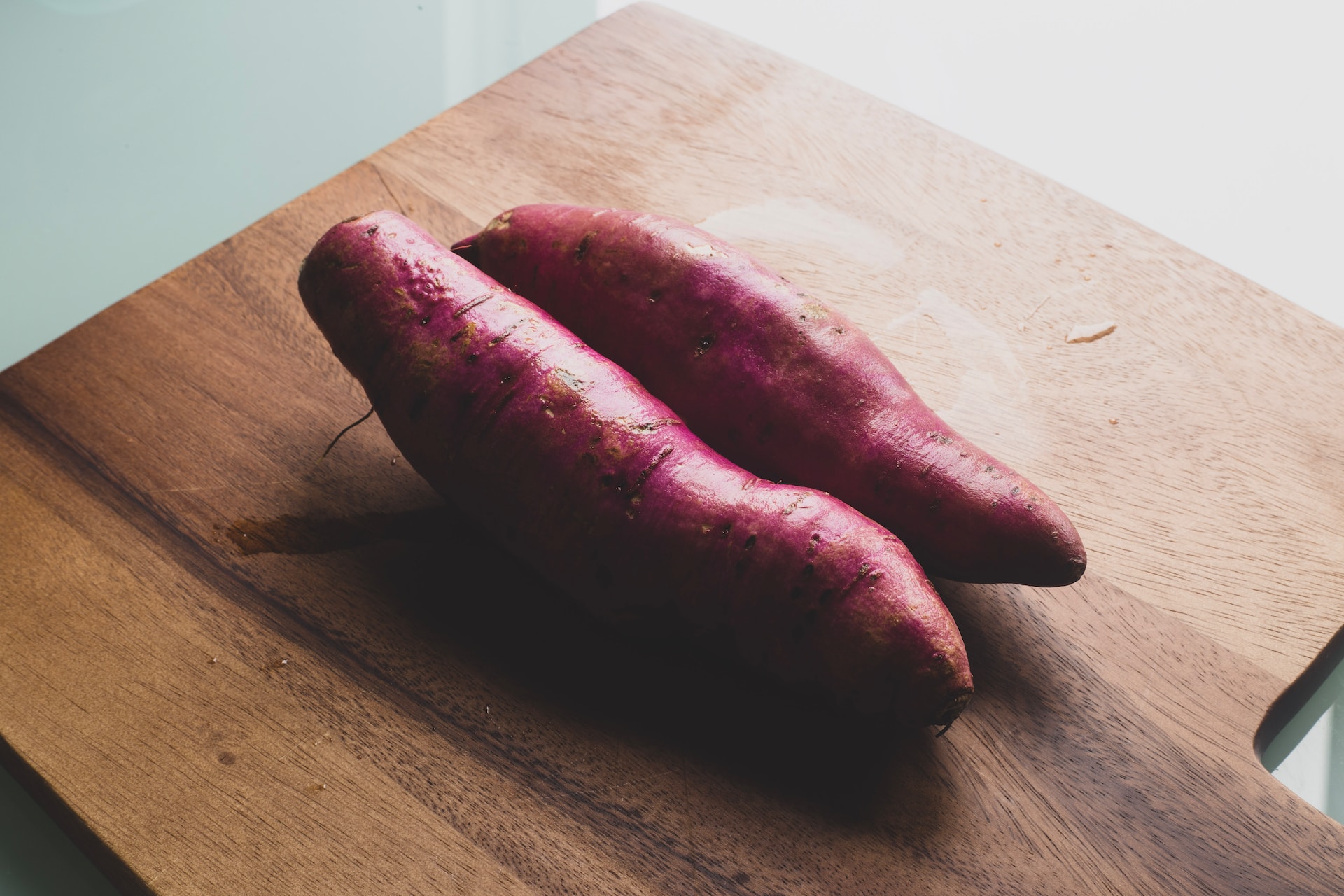
Sweet potatoes are not only delicious, but they also have a wide range of health benefits. From their vibrant orange color to their rich taste, sweet potatoes are a versatile and nutritious food that can be enjoyed in various ways. Whether you bake them, roast them, mash them, or turn them into fries, sweet potatoes are a popular choice for many cuisines around the world.
In this article, we will uncover 13 fascinating facts about sweet potatoes that you probably didn’t know. From their origin to their nutritional value, we will explore the lesser-known aspects of this beloved root vegetable. So, prepare yourself for some surprises as we delve into the captivating world of sweet potatoes!
Key Takeaways:
- Sweet potatoes are not actually potatoes, but belong to the morning glory family. They come in various colors and are packed with nutrients, making them a versatile and nutritious choice for meals.
- Sweet potatoes have a low glycemic index, support eye health, and contain anti-inflammatory compounds. They are a versatile ingredient, with edible leaves, and have a rich history in various cuisines worldwide.
Sweet potatoes are not actually potatoes.
Contrary to their name, sweet potatoes are not related to regular potatoes. They belong to the morning glory family and are only distantly related to the starchy potatoes we commonly consume.
They come in various colors.
While most people are familiar with the orange-colored sweet potatoes, they also come in shades of purple, yellow, and even white. Each color variation offers a slightly different taste and nutritional profile.
Sweet potatoes are rich in nutrients.
These root vegetables are packed with essential vitamins and minerals, including vitamin A, vitamin C, potassium, and fiber. They are also a good source of antioxidants, which help protect the body against harmful free radicals.
They have a low glycemic index.
Despite their sweet taste, sweet potatoes have a low glycemic index, which means they release sugar into the bloodstream slowly. This makes them a great choice for maintaining stable blood sugar levels.
Sweet potatoes support eye health.
Thanks to their high vitamin A content, sweet potatoes promote good vision and help prevent eye diseases such as macular degeneration.
They are a natural source of anti-inflammatory compounds.
Sweet potatoes contain anti-inflammatory compounds that can help reduce inflammation in the body. This makes them beneficial for those with conditions like arthritis and asthma.
They are a versatile ingredient.
Sweet potatoes can be used in a variety of dishes, from sweet desserts to savory mains. You can bake, roast, mash, or even spiralize them to create delicious and healthy meals.
The leaves of sweet potatoes are edible.
Don’t throw away those sweet potato leaves! They are not only edible but also highly nutritious. You can use them in salads, stir-fries, or cook them as a side dish.
Sweet potatoes have been cultivated for thousands of years.
These tuberous vegetables have a long history, dating back to prehistoric times. They were cultivated in Central and South America over 5,000 years ago and eventually spread across the globe.
They played a pivotal role during the famine in China.
In the 18th century, sweet potatoes were introduced as a staple crop in China during a period of widespread famine. Their cultivation helped alleviate hunger and saved countless lives.
They can be used as a natural dye.
The vibrant colors of sweet potatoes can be extracted and used as a natural dye for fabrics and even food products. It’s a wonderful eco-friendly alternative to artificial dyes.
Sweet potato vines are used for animal feed.
Not only are sweet potatoes themselves nutritious, but their vines are also used as animal feed. The leaves and stems provide valuable nutrients for livestock.
They are enjoyed in various cuisines around the world.
Sweet potatoes are a staple in many cuisines, including African, Asian, and Latin American. They are prepared in a multitude of ways, reflecting their versatility and cultural significance.
Now that you’re well-equipped with these 13 facts about sweet potatoes, it’s time to incorporate this amazing and nutritious vegetable into your daily meals. Explore the endless possibilities and enjoy the delicious flavors it has to offer!
Conclusion
Sweet potatoes are a versatile and nutritious vegetable that have been enjoyed for centuries. From their vibrant orange flesh to their sweet and savory flavor, there’s so much to love about sweet potatoes. Whether you’re baking them, roasting them, or mashing them, they can be prepared in a variety of delicious ways. Plus, they are packed with essential nutrients like fiber, vitamin A, and potassium, making them a great addition to any balanced diet.So next time you’re looking for a nutritious and delicious vegetable to incorporate into your meals, don’t forget about sweet potatoes. They not only taste amazing but also provide numerous health benefits. Whether you’re a fan of sweet potato fries, sweet potato casserole, or sweet potato mash, there’s no denying the incredible flavor and versatility of this remarkable vegetable. So why not start exploring all the amazing possibilities that sweet potatoes have to offer?
FAQs
1. Are sweet potatoes and yams the same?
No, sweet potatoes and yams are not the same. While they both belong to the root vegetable family, they have different characteristics and nutritional profiles. Sweet potatoes have a sweeter taste and an orange or yellow flesh, while yams have a starchy taste and a lighter flesh color. It’s important to note that true yams are rarely found in the United States and are more commonly seen in Africa and Asia.
2. How should I store sweet potatoes?
Sweet potatoes should be stored in a cool, dry, and dark place. Avoid refrigerating them as the cold temperature can alter their taste and texture. It is best to store them loose rather than in plastic bags to allow for proper airflow and prevent moisture buildup.
3. Can I eat the skin of a sweet potato?
Yes, you can eat the skin of a sweet potato! In fact, the skin is packed with nutrients and adds a nice texture to your dish. Just make sure to thoroughly wash the sweet potato before cooking to remove any dirt or debris.
4. Are sweet potatoes healthier than regular potatoes?
Both sweet potatoes and regular potatoes have their own unique nutritional benefits. Sweet potatoes are higher in fiber, vitamin A, and antioxidants, while regular potatoes are a good source of vitamin C and potassium. It ultimately comes down to personal preference and dietary needs.
5. Can I substitute sweet potatoes for regular potatoes in recipes?
Yes, you can substitute sweet potatoes for regular potatoes in many recipes. However, keep in mind that sweet potatoes have a sweeter taste and a different texture, so it may alter the flavor and consistency of the dish. Experiment with different recipes to find what works best for you.
Hungry for more sweet potato knowledge? Satisfy your curiosity with fun facts about this versatile veggie, from its surprising nutritional profile in fry form to the delectable details of sweet potato pie. Unearth even more fascinating tidbits about this humble root vegetable and explore its culinary potential in various dishes.
Was this page helpful?
Our commitment to delivering trustworthy and engaging content is at the heart of what we do. Each fact on our site is contributed by real users like you, bringing a wealth of diverse insights and information. To ensure the highest standards of accuracy and reliability, our dedicated editors meticulously review each submission. This process guarantees that the facts we share are not only fascinating but also credible. Trust in our commitment to quality and authenticity as you explore and learn with us.


